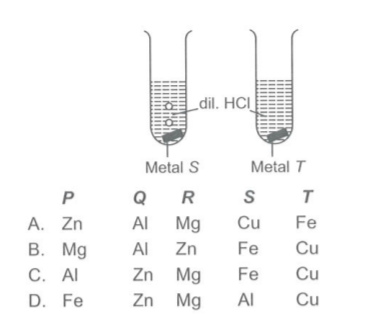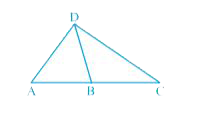Hydrogenation of naphthalene (P) with excess hydrogen gas stops cleanly at 1, 2, 3, 4-tetrahydronaphalene (Q). What conclusion can be drawn from this experiment ?

the hydrogenation of P is exothermic
one aromatic ring of P is more reactive than the aromatic ring of Q
one aromatic ring of P is less reactive than the other ring of Q
reduction of the first C=C of P is faster than reduction of the second or third C=C
The correct Answer is:B
Annelation effect.
Topper's Solved these Questions
- AROMATIC COMPOUNDSBOOK - MS CHOUHANCHAPTER - AROMATIC COMPOUNDSEXERCISE - Level 1 (Q.31 To Q.60)
1 Videos
- AROMATIC COMPOUNDSBOOK - MS CHOUHANCHAPTER - AROMATIC COMPOUNDSEXERCISE - Level 1 (Q.121 To Q.150)
3 Videos
- AN INTRODUCTION TO ORGANIC REACTIONS AND THEIR MECHANISMS ACIDS AND BASESBOOK - MS CHOUHANCHAPTER - AN INTRODUCTION TO ORGANIC REACTIONS AND THEIR MECHANISMS ACIDS AND BASESEXERCISE - ADDITIONAL QUESTION (SINGLE CORRECT CHOICE TYPE )
32 Videos
- BIOMOLECULESBOOK - MS CHOUHANCHAPTER - BIOMOLECULESEXERCISE - Level 2
1 Videos
Similar Questions
Knowledge Check
For a mirror linear magnification m comes out to +2. What conclusions can be drawn from this ?
Amirror is concaveBmirror can be convex or concave but it can not be placeCobject lies between pole and focusDobject lies between focusFreundlich adsorption isotherm is given by the expression xm=kp1/n. Which of the following conclusions can be drawn from this expression ?
AWhen 1n=0, the adsorption is independent of pressureBWhen 1n=0, the adsorption is directly proporational to pressureCWhen n=0,xm vs p graph is a line parallel to x-axisDWhen n=0, plot of xm vs p is a curve'P#Q' means 'P is the daughter of Q'.
'P©Q' mean 'Q is the brother of P'.
'P=Q' means 'Q is the sister of P'.
'P&Q' means 'P is the son of Q ' .
'P*Q' mean 'P is the father of Q'
'P@Q' means 'P is the mother of Q'.
Which of the following can be the correct conclusion drawn from the expression
'L=M#N©P*Q' ?AQ is the grandson of MBL is the uncle of NCN is the uncle of QDNone of these
At 27∘C it was observed during a reaction of hydogenation, that the pressure of hydrogen gas decreasses from 2 atm to 1.1 atm in 75 min. Calculate the rate of reaction (molarity s−1) (R = 0.0821 litre atm mol−1K−1)
View SolutionObserve the rates of evolution of hydrogen gas with five metals P,Q,R,S and T at room temperature. What could be the metals P,Q,R,S and T ?


View SolutionH2 gas is often used as a reducing gas. In a particular set up 17.4 gm of MnO2 on reacting with excess of hydrogen gas gives water and new oxide MnxOy such that mass of the oxide obtained is 12.6 g. What will be value of y if x is 2. [Mn=55]
View SolutionCan we use conc. H2SO4 for preparing hydrogen gas from zinc metal?
View SolutionConc. H2SO4 liberates hydrogen chloride gas from chlorides because
View Solution


